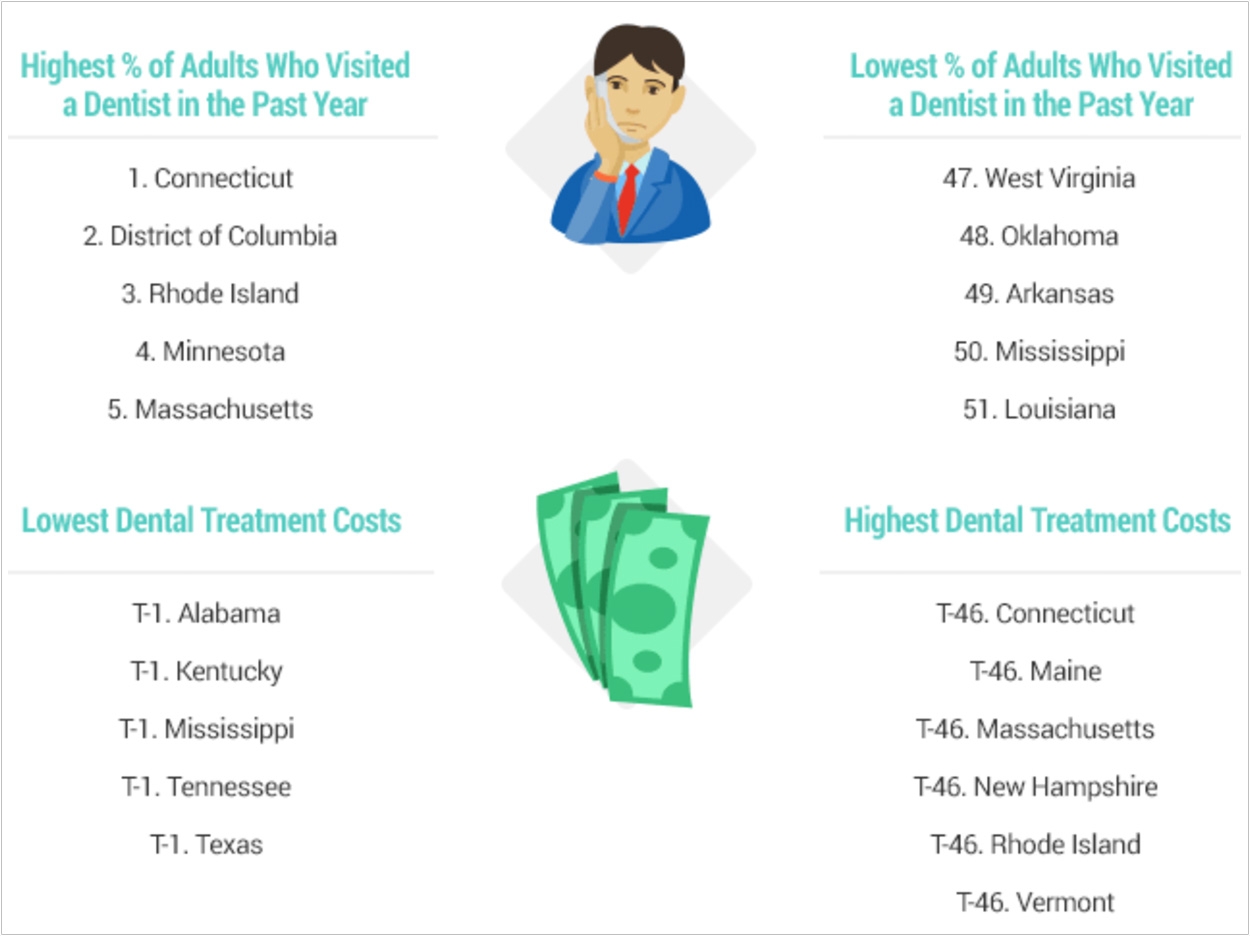
Even as more people recognize the importance that oral healthcare plays in overall health, the quality of that oral healthcare varies significantly across the country, according to 2018’s States with the Best & Worst Dental Health from WalletHub.
The states with the best dental health are:
- Minnesota
- Wisconsin
- Connecticut
- Illinois
- North Dakota
- District of Columbia
- Michigan
- Massachusetts
- South Dakota
- Idaho
The states with the worst dental health are:
- Texas
- South Carolina
- Florida
- California
- Louisiana
- Montana
- West Virginia
- Alabama
- Arkansas
- Mississippi
Rhode Island has the lowest share of the population who couldn’t afford more dental visits due to costs at 37%, which is half of the rate of Georgia, which is the highest in the nation at 74%. Massachusetts has the most dentists per 100,000 residents at 48. That’s three times more than Tennessee, which has the fewest at 16.
Solutions that focus on reducing costs such as evidence-based treatment and silver diamine fluoride and on increasing the scope of care among other dental professionals could have a significant impact on improving oral health in states that face these challenges, according to experts polled by WalletHub. Expansion of dental coverage and school-based treatment would have a significant impact as well, the experts noted.
“Dental healthcare, in my opinion, can be made more affordable when dental hygienists are allowed to practice more independently and in different settings without the direct supervision of dentists. The expansion of dental hygiene mid-level providers (dental therapists) could potentially fill the gap in access to care and reduce costs,” said Elmer E. Gonzalez, MS, RDH, program director and assistant professor of dental hygiene at New Mexico State University.
“Dental healthcare must be more accessible through increasing the number of lower-cost, government-subsidized options for the public to obtain proper dental care and should be included as basic coverage in all health insurance policies, including Medicaid,” said Judith E. DiLorenzo, MA, RDH, department chair of dental hygiene at Hudson Valley Community College.
“School sealant programs should be readily accessible to all school-age children regardless of income. That being said. Children in low-income areas have higher rates of dental decay and dental disparities, so yes, they would benefit. The best care scenario for them would be to have a program or dental health clinic right in their very own school,” said Laurel L. Risom, MS, clinical associate professor in the Fones School of Dental Hygiene, University of Bridgeport.
Also, according to the study:
- Minnesota, Hawaii, and Illinois have the lowest share of adults with poor or fair oral health at 22%, while Montana has the highest share at 40%.
- Hawaii has the lowest share of adults age 65 years and older with no natural teeth, 5.6%, while West Virginia has the highest share at 30.4%.
- The District of Columbia has the highest share of the population who receive fluoridated water, at 100%, which is 8.5 times higher than the lowest share, Hawaii, at 11.7%.
“For every $5 that is spent on water fluoridation, $32 is saved in the treatment of dental caries (tooth decay). This is a great return on investment,” said Mia L. Geisinger, DDS, MS, associate professor in the Department of Periodontology and director of the Advanced Education Program in Periodontology at the University of Alabama at Birmingham.
To calculate its results, WalletHub looked at 25 key metrics such as the share of adolescents who visited a dentist in the past year, dental treatment costs, and the share of adults who have low life satisfaction due to their oral health. Each metric was weighted, graded on a 100-point scale, and averaged together for an overall score.
Related Articles
Older Americans Still Face Barriers in Oral Healthcare
Study Ranks the States With the Best and Worst Oral Health
Society Puts Boots on the Ground in the Fight for Fluoridated Water












